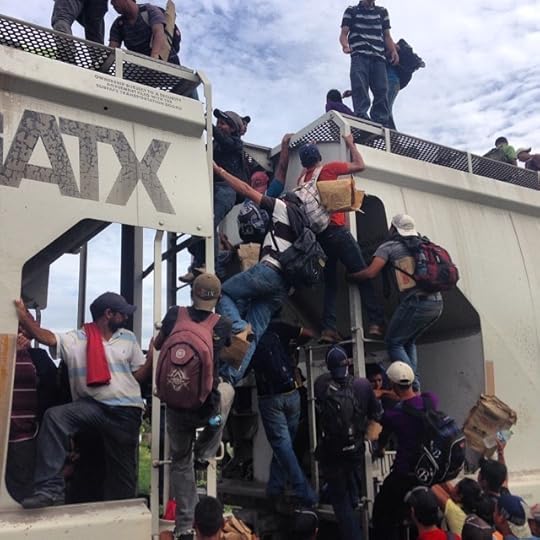The South-Of-The-Border Crisis

In a must-read counterpoint to the media narrative that the Central American children pouring across our border are fleeing gang violence, Saul Elbein argues that the problems in Guatemala are far more extensive. He paints a picture of a failed state offering a veneer of legitimacy to a corrupt, feudal “deep state” that maintains itself through violence and exploitation:
The only model of power that exists in Guatemala is … terroristic, extra-legal, and dominated by violence. So is it any surprise that after the war, on the streets—where people grasped for the scraps that weft, where children grew up with no chance at wealth and less at respect—pirate organizations like the MS-13 grew? What we’re seeing in Guatemala is not quite, in other words, a crime wave. It’s simply the way things have been there for a long time, pushed to the next level. If you are a civilian there, beneath the labels—soldier; gangster; policeman; army; cartel—is but one underlying reality: men with guns who do what they want and take what they want. Your options are to buy your own security and gunmen; to join a gang yourself; or to leave.
And so many leave.
Meanwhile, Central American migrants are now being barred from Mexican cargo trains:
On Thursday, a freight train derailed in southern Mexico. It wasn’t just any train, though:
It was La Bestia—”the Beast”—the infamous train many Central American immigrants ride through Mexico on their way to the United States. When the Beast went off the tracks this week, some 1,300 people who’d been riding on top were stranded in Oaxaca. After years of turning a blind eye to what’s happening on La Bestia, the Mexican government claims it now will try to keep migrants off the trains. On Friday, Mexican Interior Secretary Miguel Ángel Osorio Chong said in a radio interview that the time had come to bring order to the rails. “We can’t keep letting them put their lives in danger,” he said. “It’s our responsibility once in our territory. The Beast is for cargo, not passengers.”
In light of the situation, Keating advocates a major rethink of how we respond to chaos in Latin America, not to mention our own role in creating it:
I don’t claim to have an immediate fix for Central America’s ills, but surely there are more creative strategies out there than pouring money into a failing drug war and then walling ourselves off from the victims. Latin American issues tend to get shortchanged in the U.S. foreign policy conversation relative to more remote regions. I suspect this is part of the reason why Central America’s instability is only garnering attention now that the consequences of it have quite literally arrived at our doorstep.
On a broader level, the crisis should be a reminder that the U.S. is not immune from events to its immediate south. We’re an American country—in the regional sense of that word—and it’s time to start thinking like it.
(Photo: Central American migrants boarding the “La Bestia” train. By Pedro Ultreras.)



Andrew Sullivan's Blog
- Andrew Sullivan's profile
- 153 followers



